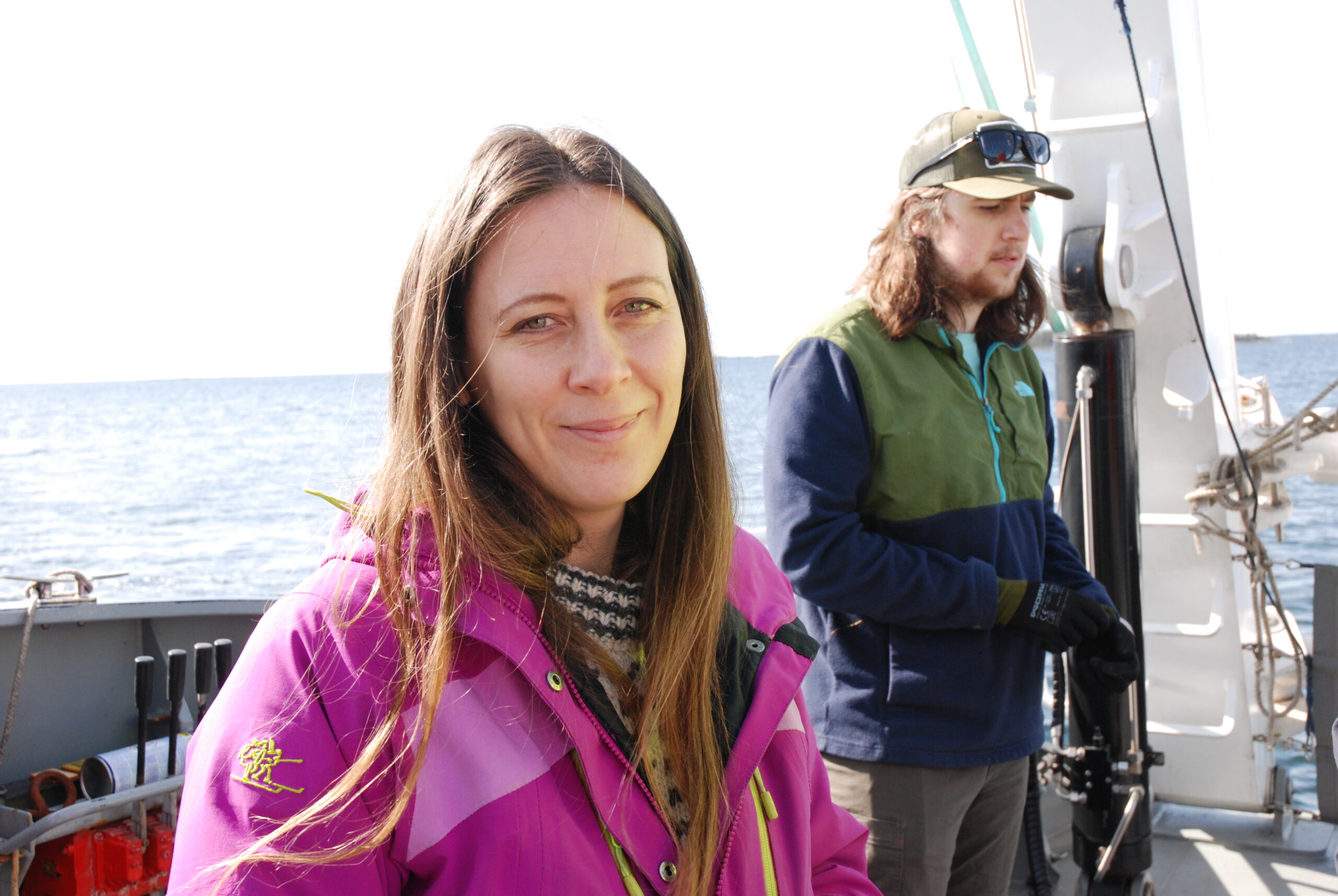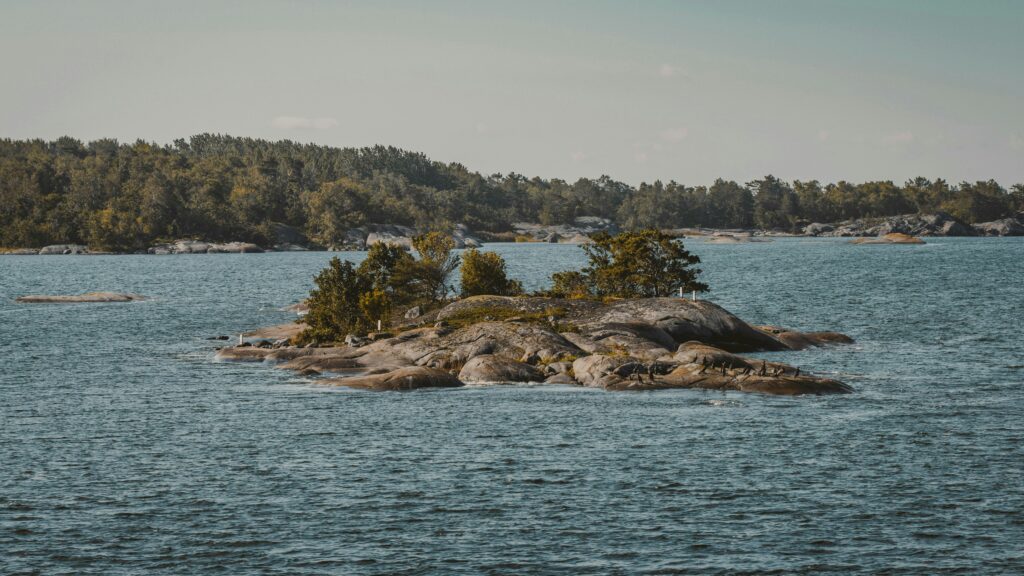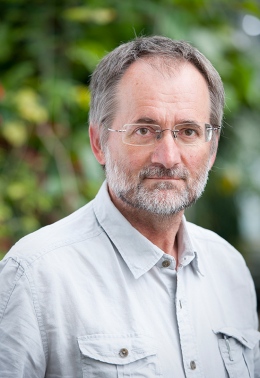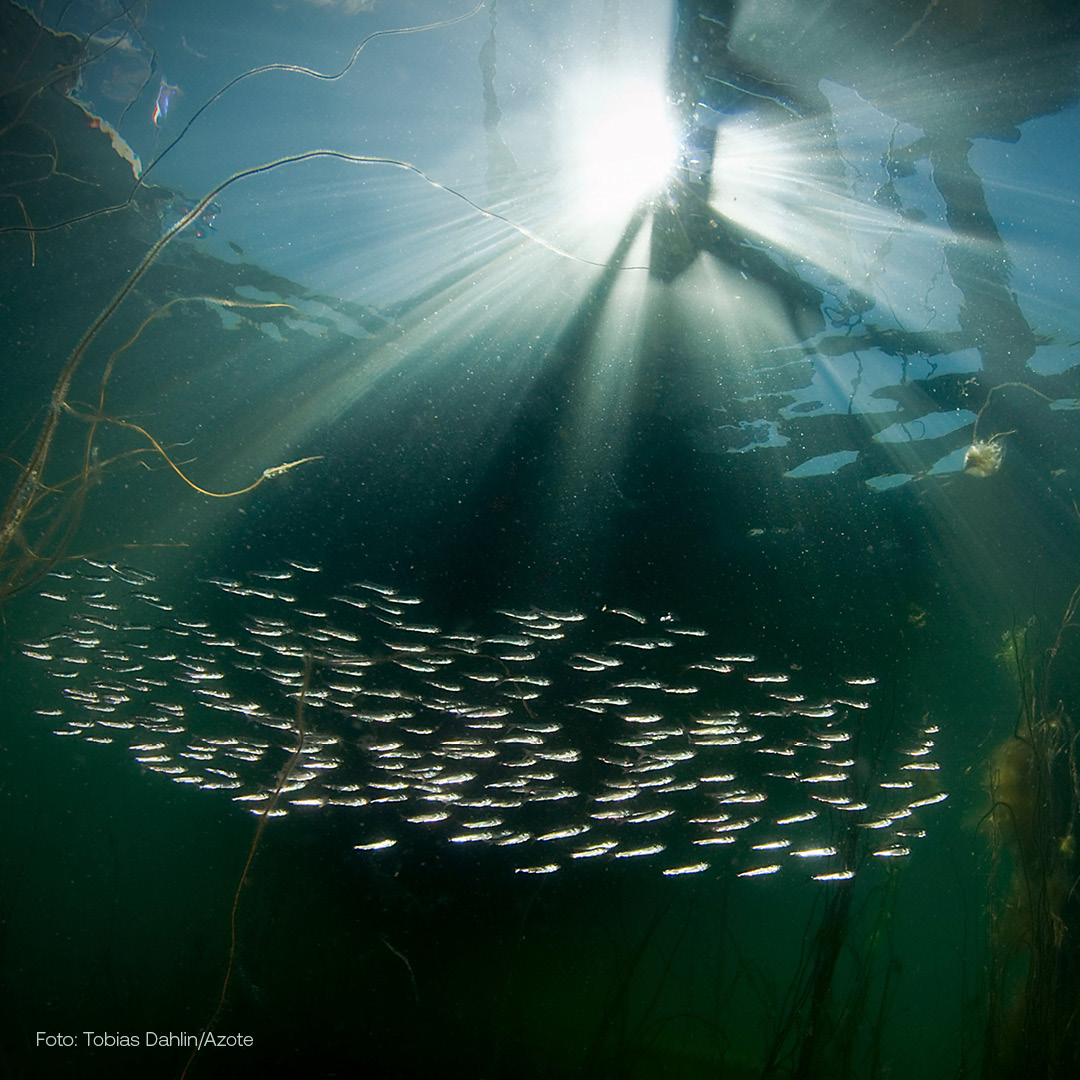How has large-scale industrial fishing affected herring stocks in the archipelago, and what does this mean for coastal ecosystems? To find the answers, researchers at Stockholm University are dusting off old echo sounder data to create a historical baseline for how herring stocks have changed over time. The project is led by Agnes Karlsson and supported by BalticWaters.
The Baltic Sea coast and archipelago have historically been rich in herring – a key species in the marine ecosystem and a historically important resource for coastal communities and the national economy. But something has happened in recent decades. Offshore stocks have declined sharply, mainly due to intensive large-scale fishing. At the same time, small-scale coastal fishermen report that herring is becoming increasingly difficult to find.
‘There is concern that increased large-scale fishing for herring is having a negative impact on small-scale fishing. If fewer herring reach the coast to spawn, this could affect the regrowth of the stock and have consequences for predatory fish such as pike and perch – and, by extension, the entire coastal ecosystem,’ says Agnes Karlsson, senior lecturer and associate professor of marine ecotoxicology at Stockholm University.
Comparable data is needed to confirm how coastal herring stocks have changed over time. Agnes and her colleagues at Stockholm University have now begun digging into the archives. By breathing new life into old data series, they want to create a historical baseline for the amount of fish in the archipelago – an important piece of the puzzle in understanding the current situation.

Intercalibration makes old data comparable
Stockholm University, conducted hydroacoustic surveys* in various coastal and archipelago areas on the east coast. Using echo sounders, data was collected on the quantity of fish and their size distribution in different areas.
‘This is unique material for the Baltic Sea, with data spanning from 1985 to 2012. But the data series needs to be processed in order to be comparable between years and over time,’ says Sture Hansson, who plays a key role in the project’s research team.
The scope of the echo soundings varies from year to year due to varying funding, and echo sounding methods have also developed over the years. In order for the comparison to be reliable, the researchers must intercalibrate the measurements, i.e. take into account technical differences between different measuring instruments, software and survey methods.

Important knowledge for the protection of our coastal environments
The project will establish a baseline for herring abundance along the coast. The baseline can then be used to investigate whether herring stocks have declined as a result of large-scale fishing – and what ecological consequences this has had.
‘It is not certain that what has happened in the Baltic Sea as a whole is reflected in coastal waters. The decline may be greater inshore – or less. It remains to be seen,’ says Sture.
A decline in herring can have consequences far beyond fishing itself. Herring is an important food source for many species, such as predatory fish, and if it disappears, the entire ecosystem will be affected. The loss of predatory fish can, among other things, increase the amount of filamentous algae or deteriorate water quality. The study may therefore become an important basis for future management of both fish stocks and coastal environments.
‘We hope that the results will provide a clearer picture of how coastal ecosystems have developed over time – and what is needed to protect them. If it turns out that the amount of herring has decreased as a result of large-scale fishing, and that this has negative effects, this is important information for management,’ concludes Agnes.

*What is hydroacoustics?
Hydroacoustics is an important tool for monitoring fish stocks and the environment in seas and lakes. The method is based on echo sounders sending out sound pulses into the water, which are reflected back when they hit fish or other objects. By analysing these echoes, researchers can estimate the quantity, distribution and sometimes even the species and size composition of fish in an area.

About the project
The project Has large-scale fishing reduced the herring population in coastal waters? is carried out by Stockholm University. Through BalticWater’s Program to fund research projects and pre-studies, the project has been granted funding of SEK 950.000. You can read more about the other three funded projects in the article New projects for a living sea.

